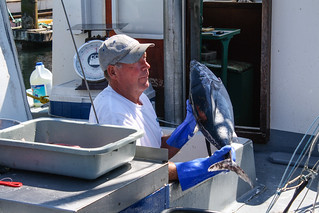 Ever wondered about the crab-flavored fish protein in your seafood sandwich, “crab” salad or California sushi roll?
Ever wondered about the crab-flavored fish protein in your seafood sandwich, “crab” salad or California sushi roll?
It’s surimi, a fish protein paste made into various shellfish-flavored products.
Earlier this month, Oregon State University’s Seafood Lab on Marine Drive hosted the 20th annual Surimi School, a gathering of global industry representatives and researchers that made Astoria for one week the epicenter of expertise on the globally popular, gelatinous fish protein you’ve likely had in one form or another.
About 40 students from surimi plants, surimi seafood (finished product) plants and others from accessory industries attended lectures and took part in surimi labs.
Jae Park, an OSU professor seen as the pre-eminent expert on surimi, founded the OSU Surimi Technology School in 1993 in Astoria. He started similar institutes in Bangkok in 1996 and in Paris in 1999.
For most of the school’s first decade, Oregon Sea Grant invested in the surimi program’s development and success with grants to support Park’s research into ways to improve the texture of surimi, and with direct contributions to the surimi school. A number of Park’s research publications were published by Sea Grant as well.
“The academic and industry languages are different,” said Park. “With that mentality, I found there was a great need to build industry-academia partnerships.”
His answer has been to bring in academic and industry experts from around the world to Astoria every May for the last 20 years, sharing knowledge between the two groups and enhancing everyone’s understanding of the ever-changing surimi industry.
Learn more





